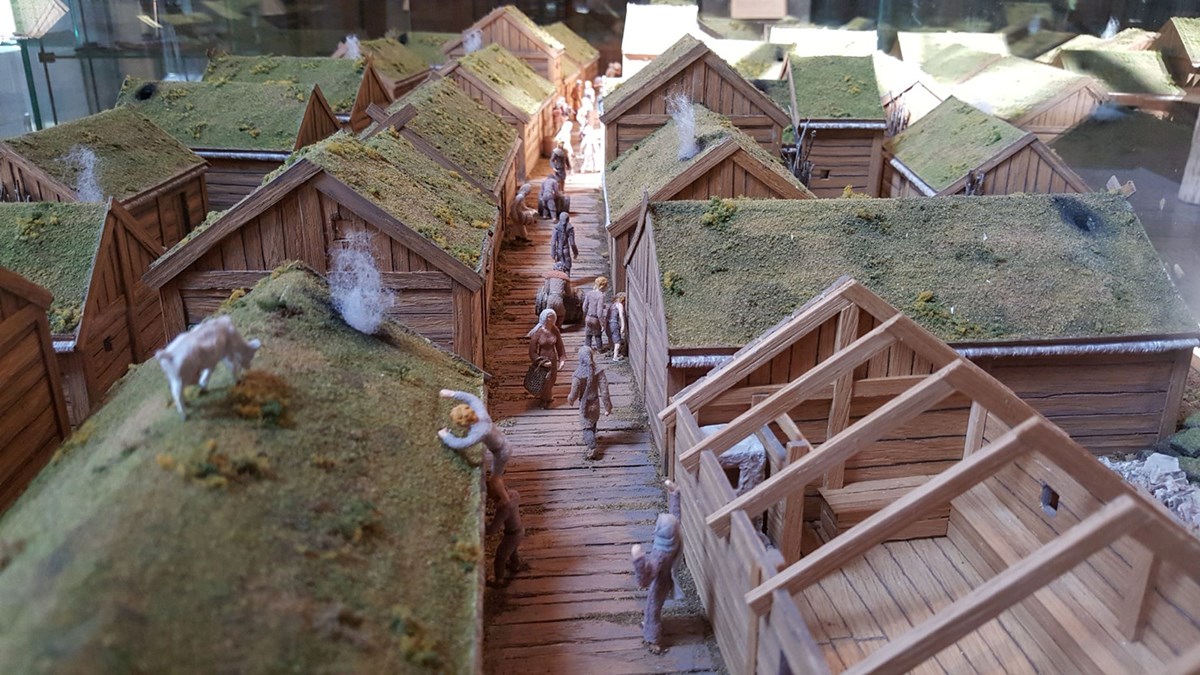Home and household

We have heard a great deal about the Dark Ages. And it was certainly dark, at least if you were indoors. Most houses at that time did not have any windows.
The home environment changed during the course of the Middle Ages and it differed quite considerably depending on the social class you were born into. Churches, castles and monasteries were built either wholly or in part of stone and brick. If you were extremely wealthy, you could as a private individual also live in a stone-built house. This was unfortunately not the case for the majority of the inhabitants of Lödöse, whose homes were built of wood. The buildings generally had no windows, just a door and a hole in the roof to allow the smoke to escape. It would be safe to say that it wasn’t particularly pleasant indoors due to the copious amounts of smoke that accumulated. People tended to spend as little time as possible inside the house.
A farm in miniature
The private homes in the town were like farms in miniature, with a cottage, roasting house, kiln and barn, often combined with a stall facing the street for selling goods. The cottage was where the inhabitants spent the majority of their day-to-day lives and it was where they ate and slept. The roasting house was a kitchen building where food was prepared, and the kiln was a drying facility, mainly for cereals used in the brewing of beer. At the beginning of the Middle Ages, the barn was attached to the cottage but over time it became a separate building where the animals were kept, at least at night. During the day, many of the animals wandered freely around the town. This subsequently led to various enactments, stipulating that the people had to keep their animals indoors during the night. The stall facing the street had a hatch that could be opened, and there was also a workshop where the people produced their artisan goods.
Cultivation
There are written sources from Lödöse that state that there were cabbage gardens just outside the town, at what is now Tingberg. These cabbage gardens were said to be owned by private individuals who lived in Lödöse, and who had to walk to their allotment to pick what they needed. It was mainly cabbages that were grown in a cabbage garden, although the term ‘cabbage’ tended to cover a whole range of different plants with edible leaves, such as kale and wild spinach. Different types of onions, carrots, parsnips, turnips, beans and peas were also grown. The allotments didn’t mean the inhabitants were self-sufficient, and they were still dependent on the farmers who came into the town from the surrounding countryside to sell their produce.






